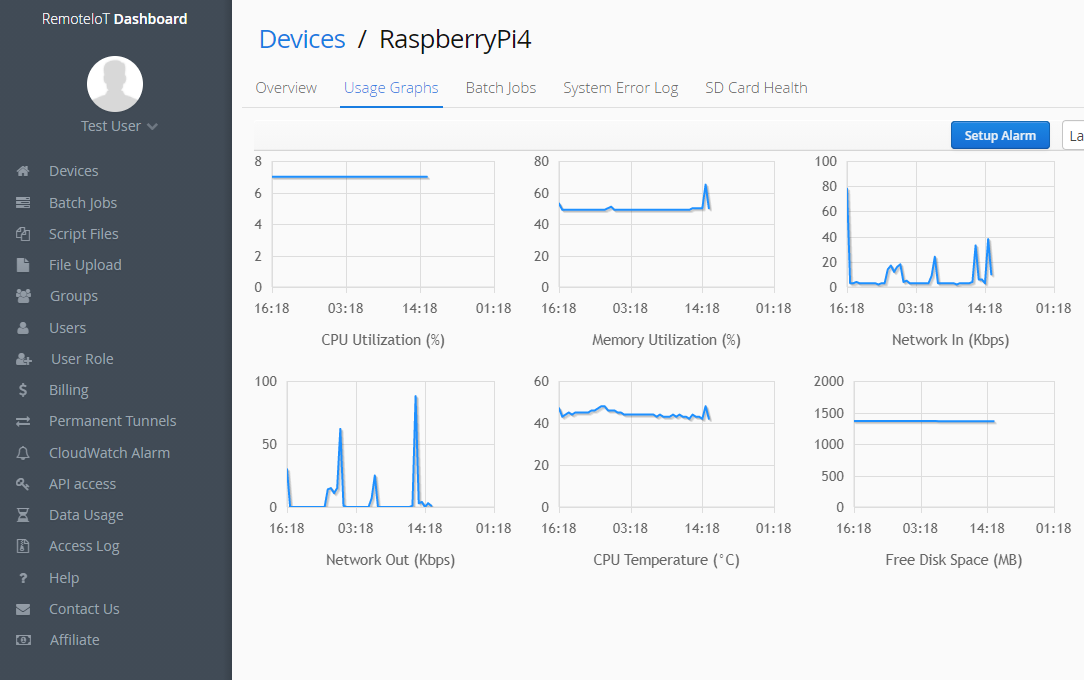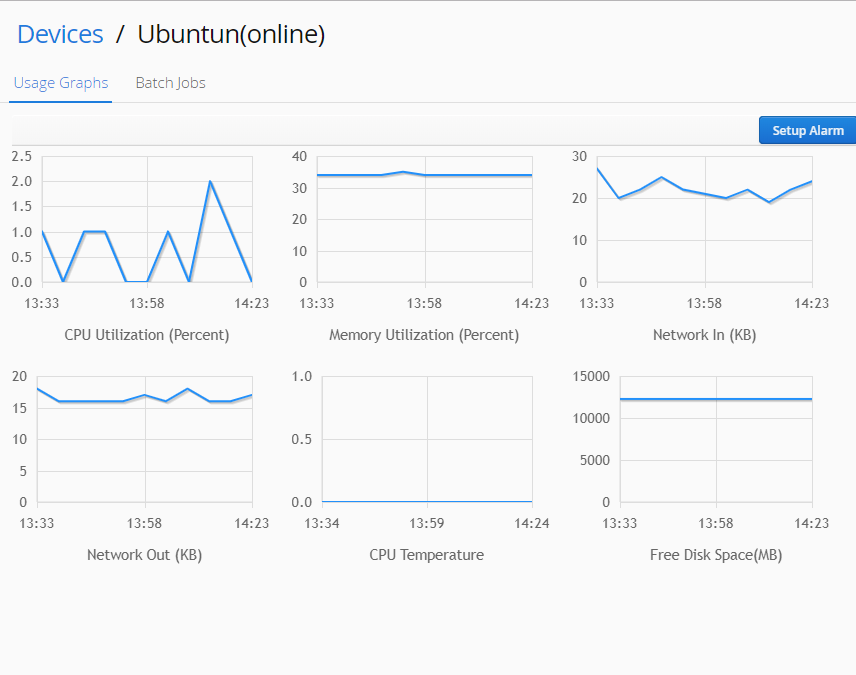
Operating your single-board computer from afar proves to be exceptionally valuable, but the task moreover poses hidden safeguarding threats. To curtail the aforementioned problems, establishing adequate firewalls and learning how Network Address Translation (NAT) functions is important. A firewall acts as a fence between your Pi and the outside world, facilitating you to control incoming and outgoing traffic based on specified rules. By fine-tuning your firewall to only allow trusted connections, you can significantly increase the security of your device.
Network Address Translation devices are another vital element in remote access security. They attribute private IP addresses to devices within your network and present a single public IP address to the outside world. This method helps to obscure the internal network structure, making it less likely for attackers to target individual devices. By exploiting both firewalls and NAT routers, you can create a secure and robust remote access solution for your Raspberry Pi.
Engaging IoT Devices from All Locations the Firewall
The realm of Internet of Things (IoT) offers astonishing opportunities for management, but it also brings unique problems. One key question is securely reaching these devices from any locations. Traditional firewalls, designed to protect infrastructures from external threats, often impede access to IoT endpoints, obstructing the full potential of connected apparatus. To handle this issue, innovative solutions are emerging.
- Online platforms allow for encrypted access to IoT devices, enabling users to control them from anywhere with an internet link.
- Encrypted Network systems create a private tunnel between the user's device and the IoT network, safeguarding data during propagation.
- Secure Authorization protocols enforce strict access controls, corroborating the identity of users before granting them access to specific devices.
By embracing these tools, organizations can tap into the full benefits of IoT while ensuring the privacy of their valuable data and infrastructure.
Overcoming Barriers: Linking to Raspberry Pis Behind Network Address Translation (NAT)
Network Address Translation (NAT) can sometimes pose a hurdle when trying to connect your Raspberry Pi from outside your local network. While NAT effectively masks private IP addresses, it can make direct connections strained. Fortunately, there are several solutions to bridge this gap and enable seamless remote access to your Raspberry Pis.
- One common approach is to utilize a Dynamic DNS service, which provides a constant hostname for your Pi that updates automatically even when its IP address changes.
- Another option is to set up port forwarding on your router, allowing specific ports on your Raspberry Pi to be mapped to public IP addresses. This method requires careful configuration and understanding of network protocols.
- For more secure access, consider implementing a VPN (Virtual Private Network). A VPN encrypts your connection and routes it through a authorized server, masking your real IP address and providing an extra layer of protection.
By exploring these strategies and selecting the most appropriate solution for your needs, you can effectively bridge the gap created by NAT and gain reliable remote access to your Raspberry Pis, unlocking their full potential from anywhere with an internet connection.
Remote Management: Getting to IoT Devices Through Firewalls
Remote access involving IoT devices frequently be a challenge when addressing firewalls. These security measures built to protect your network can sometimes obstruct your ability to control your electronic devices from afar. However, mastering the principles behind firewall operation and implementing targeted configurations can grant a secure pathway for remote oversight.
One usual approach is to develop port forwarding rules. This comprises channeling specific IP addresses and ports to your IoT device, effectively constructing a direct connection. Another method adopts VPNs (Virtual Private Networks). By building a secure tunnel between your device and the network where your IoT device resides, you can avoid firewall restrictions and gain access to your devices remotely. It's paramount to remember that implementing these solutions depends on a thorough understanding of your network infrastructure and security protocols to ensure the integrity and safety of your system.
- Apply strong passwords for your router and IoT devices.
- Frequently update firmware on your router and IoT devices to correct security vulnerabilities.
- Close any unnecessary services or ports on your router.
Securing Firewalls for Remote Raspberry Pi Management
Remotely controlling your Raspberry Pi may be a powerful way to employ its capabilities. However, firewalls are crucial for securing the security of your device. Properly customizing firewall rules provides you to manage incoming and outgoing network traffic, excluding unauthorized communications. Understanding how to handle these settings is important for safeguarding the integrity of your Raspberry Pi.
- Adopt a firewall software solution designed for Raspberry Pi. Numerous possibilities are available, each with its own set of attributes.
- Set clear rules that determine which ports should be open and which should remain closed.
- Analyze the use of a VPN for an extra layer of shielding when engaging remotely.
Bear in mind that firewall rules should be adapted to your specific circumstances.
Remote Access Essentials: A Guide to Securely Managing IoT Devices Behind NAT
Effectively supervising your Internet of Things (IoT) devices from a remote location presents unique difficulties. NAT (Network Address Translation), commonly used in home and small office networks, can complicate this process. This guide will delve into the essential steps to securely access and administer your IoT devices behind a NAT firewall.
- First, establish a secure connection between your remote device and your local network using a reliable VPN protocol like OpenVPN or WireGuard.
- Then, configure port forwarding rules on your router to allow incoming requests to the specific ports used by your IoT devices. Ensure you only forward traffic to the required ports and use strong passwords for authentication.
- At last, consider implementing multi-factor authentication (MFA) for added security when accessing your IoT devices remotely. MFA adds an extra layer of protection by requiring multiple forms of verification, such as a password and a unique code sent to your phone.
By applying these best practices, you can safely and securely maintain your IoT devices from anywhere with an internet connection.
Safeguarding Remote Access to Your Raspberry Pi
Wishing to access your Raspberry Pi offsite? A firewall is essential for safely enabling remote access. It acts as a gatekeeper, blocking unauthorized requests while allowing whitelisted requests through. By implementing proper firewall configurations, you can ensure your Pi remains secure even when accessed remotely.
Begin by identifying the services you need to expose externally. HTTP servers are common examples. Configure your firewall to permit inbound access on the specific ports used by these services. Remember, a well-configured firewall will only open the necessary doors, controlling potential vulnerabilities.
- Deploy a robust firewall software package designed for Raspberry Pi, such as UFW or iptables.
- Set up strong passwords for your remote access accounts.
- Often review and update your firewall rules to address any changes in your setup.
Utilize Remotely to Raspberry Pis Through Firewalls and NAT Routers
Securing your Raspberry Pi within a network environment often involves traversing firewalls and Network Address Translation (NAT) routers. This can seem daunting in the beginning, but understanding these components is crucial for safely connecting to your device from afar. This guide provides an in-depth walkthrough of common practices for remote access, empowering you to use with your Raspberry Pi effectively regardless of its physical location.
We'll delve into the fundamentals of firewalls and NAT, outlining their roles in network security. Then, we'll explore various means for establishing secure connections, including SSH tunneling, VPNs, and port forwarding. Furthermore, we'll provide practical steps and examples to help you implement these techniques on your own setup.
By mastering the art of remote access, you can unlock a world of possibilities for your Raspberry Pi projects, enabling you to monitor performance, debug issues, and even control your devices remotely.
Robust Remote Access for Your Raspberry Pi
Seeking ways to reach your Raspberry Pi externally? Follow these tips to set up secure remote access. First, identify a suitable protocol like SSH or VNC. Next, activate the necessary software on your Pi. Develop a strong password and enable two-factor authentication for added security. Then, open the required ports on your router to your Pi's IP address. Finally, test your connection from a remote device.
- defense hazards. To reduce security challenges. To lower safeguarding hazards. To reduce guarding Remotely Access IoT devices Behind Firewall or NAT router difficulties. To lessen
- Use firewalls to protect your Raspberry Pi. security issues. To lessen security issues. To lessen security difficulties. To minimize guarding vulnerabilities. To mitigate
- Renew your software up-to-date to patch vulnerabilities.
- Track your system logs for suspicious activity.
From Home Network to the World: Remotely Controlling Your Raspberry Pi Across Firewalls
Your small form factor computer can be much more than just a local project. With the right setup, you can control it from anywhere in the world, regardless of firewalls or distance. This opens up a universe of possibilities - managing your home automation, accessing data remotely, or even running web-operated services directly from your Pi.
While this may seem daunting at first, setting up remote access for your Raspberry Pi is surprisingly straightforward. You'll need to configure your network settings, set up a secure connection, and choose the right tools for controlling your device remotely. Here are some essential tips to get you started:
* First, ensure your home network is configured properly. This includes setting up port forwarding rules to allow access to your Pi from outside your local network.* Next, choose a secure connection protocol like SSH or VPN. These protocols encrypt your communications and protect your data from hacking.* Finally, select a remote control tool that suits your needs. Popular options include VNC for graphical access, SSH clients for text-based interaction, and cloud-based platforms for simplified management.
Once you've taken these steps, you can enjoy the freedom of controlling your Raspberry Pi from anywhere with an internet connection. This opens up a world of possibilities for learning, experimenting, and building creative projects.
Utilizing IoT Devices Beyond the Local Network: Firewalls and NAT
Extending the reach of Internet of Things (IoT) devices beyond the confines of your local network requires careful consideration of security mechanisms. Firewalls serve as crucial guards, meticulously scrutinizing incoming and outgoing traffic to thwart potential threats. Network Address Translation (NAT), on the other hand, allows multiple devices on a private network to share a single public IP address, optimizing network efficiency and safeguarding internal locations.
By implementing robust firewall configurations and employing NAT effectively, you can create a secure and efficient environment for your IoT ecosystem to thrive. This combination of methods ensures that your devices can securely connect with the wider internet while functioning protected from malicious actors.
- Implement comprehensive firewall rules to allow only trusted traffic.
- Make use of NAT to protect internal device addresses.
- Audit network activity for any suspicious behavior.
